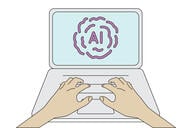You have /5 articles left.
Sign up for a free account or log in.
While touring a factory in northern Wisconsin that makes millions of aluminum cans on a daily basis, we asked the plant manager whether he thought regional colleges and universities were meeting his company’s needs. He looked surprised by the question and answered, “You can’t teach [in a classroom] the way we make cans here.” If he had employees with basic skill sets in the field, he said, his company could train new hires to use their machinery and learn their procedures.
Similarly, the human resources director of a large plastics manufacturer told us, “As long as [employees] have the basic knowledge and certain abilities, we can typically teach them the skills that they need on the job -- that’s the bottom line.”
Such responses beg the question: What are these fundamental, even nonnegotiable skill sets that employers seek in their employees? This is a question that our research group is investigating within the biotechnology and advanced manufacturing industries in Wisconsin. As part of a three-year study, we have interviewed over 150 C.E.O.s, plant managers and human resource directors in companies large and small, as well as educators and administrators at two- and four-year colleges and universities across the state, asking them about the skills and aptitudes required to succeed.
The Dominant Narrative of the Skills Gap
Throughout Wisconsin, we have found that the answer to this question is more complicated and nuanced than the dominant narrative of the skills gap suggests.
That narrative is rather simple: employers need certain skills, usually said to be occupation-specific technical aptitudes. The nation’s high schools, colleges and universities, which should be preparing students for entry into the workforce, are failing to provide these skills. Because of the lack of technically skilled workers, the argument goes, many companies reportedly cannot take on new accounts or hire new workers.
The oft-reported notion that employers are unable to find appropriately skilled workers has become intertwined with the sentiment that the liberal education model and the broader College for All movement have produced too many students with poor career prospects and massive student debts. Stories abound of Starbucks baristas and parking lot attendants with expensive baccalaureate degrees in the humanities, while 70 percent of the new jobs created through 2020 in states like Wisconsin will require less than a four-year degree.
How big of a problem is this? Instead of being part of the normal ebb and flow of the labor market, some suggest that, when coupled with demographic shifts that include mass retirements of the baby boomer generation, a perfect storm may be brewing that spells disaster for certain sectors of the economy in Wisconsin and the nation -- even the White House is rushing to figure out how to solve the nation’s skills gap.
The Skills Gap and Public Policy
The solution to this state of affairs has been to continue pushing the educational sector to align its aims more closely with the supposed needs of employers.
In Wisconsin, the ascendancy of this viewpoint has manifested itself most directly in Governor Scott Walker’s approach to higher education policy. While the administration has recommended $300 million in cuts to the University of Wisconsin System, a network of two- and four-year public colleges and universities across the state, it has proposed language to the system’s charter about meeting workforce needs and directed over $35 million to develop new training programs in the state’s technical college system -- all with the explicit goal of recalibrating public education to meet the skills-related needs of the state’s employers.
This emphasis on tailoring education to fit industry needs has also taken root at the national level. In the 2015 State of the Union, President Obama underlined his intention to connect “community colleges with local employers to train workers to fill high-paying jobs like coding, nursing and robotics.”
As part of this effort, the president has also articulated a national goal of finding “faster pathways” for students to get “the best skills possible at the cheapest cost,” while in the past he famously poked fun at art history degrees.
At the state and national level, the policy response to the skills gap idea has been to focus almost exclusively on training students in the so-called hard skills, or the technical knowledge and ability to perform tasks like welding or computer-aided design programming in two-year technical colleges. This focus is also marked by an attendant de-emphasis on general education and the liberal arts across the entire postsecondary spectrum, but especially in the nation’s four-year colleges and universities.
Even if we grant the first (mostly unexamined) assumption of the skills gap narrative -- that institutions of higher education should be geared toward training students with the kinds of skills that industry leaders demand in the short term -- we are still faced with two important questions. First, do employers want new hires with solely technical skills? Second, do our current education policy choices actually reflect the desires of industry? The answer to both questions -- based on our extensive work in the field -- is no.
Employers Want More
While our research indicates that business leaders certainly need employees who have basic knowledge and technical expertise appropriate to their job type and industry, the evidence clearly indicates that they place a high premium on other qualities as well. These skill sets, often denigrated as soft skills, are not viewed as optional competencies but are indispensable complements to technical expertise.
Our data reveal that the skill that is in most demand among employers in Wisconsin is a strong work ethic. Employers spoke of work ethic not only in basic terms such as showing up to work on time but also in terms of being persistent and sticking with a problem until it is solved. Both employers and educators alike underscored the challenges that one person termed “the work ethic problem,” as it implicates not only formal education but also parenting, social norms and company-specific traditions and expectations.
Interestingly, a strong work ethic implicates another attribute that is rarely discussed in the skills gap debate -- the desire to continually learn throughout one’s working life, or what some call lifelong learning. This aptitude is particularly important given the rapidly evolving nature of technology and the subsequent changes in the workplace. “A diesel technician 10 years ago would work on the same pump every day for years and become experts in it,” one employer told us. “Now we're flowing employees to different product, so... we're really looking for people that can handle change and can adapt.”
Businesses are also searching for employees who can effectively work well in teams. For instance, the C.E.O. of a biotechnology firm spoke of the importance of collaboration in their team-based contract work. “We have an example here... a tremendous scientist, but virtually impossible to work with in a team,” he said. “That's just not conducive to the work we do.” An integral part of working in teams is also being an effective communicator, both in writing and in everyday conversation.
Employers also perceived critical thinking, or the ability to problem solve and think on one’s feet, as an important quality in new hires. An executive at a manufacturing company explained, “To be able to think analytically and problem solve... is a critical skill.”
A growing body of evidence supports these findings. A 2011 survey of manufacturing executives revealed that the most serious skills deficiencies were in the areas of problem solving, basic technical training, fundamental employability skills such as work ethic and technology skills. Along similar lines, the National Research Council, the industry-supported Partnership for 21st Century Skills and the Department of Labor are beginning to conceptualize skills in ways that extend beyond the traditional focus on hard skills alone.
Thus, the issues facing our workforce are much more complicated than a shortage of technically skilled employees that can be addressed through more fast-track programming in our nation’s two-year technical colleges. Indeed, what employers are seeking is not simply a cadre of workers who are technically proficient, but engineers who can work easily with customers, chemists who can write clear, succinct prose and CNC operators who can collaborate with coworkers.
While contemporary policy and rhetoric suppose an either/or dichotomy between technical training and liberal or general education, it is evident that employers want to see skills and aptitudes that are associated with both models of education. “To meld the creative side with the practical side,” as one manufacturer told us, should be the ideal. Instead, he and others found few job applicants who represented this ideal -- which is what we argue is the true skills gap.
Integrating Education and Training
Beyond a reconceptualization of which skills and attributes are needed to fuel the 21st-century economy, what is missing in the national debate is a clear plan of action for the nation’s business and postsecondary leaders.
In Wisconsin we have found numerous examples of educators and corporate trainers who have created education and training programs that focus on the entire skills spectrum. The key ingredients in these programs can be distilled to the following three components.
1. Appreciate the role of liberal and general education in preparing students for the workforce.
The thinking on essential workplace skills needs to shift from the traditional focus on technical training to a more comprehensive view that acknowledges liberal and general education’s role in cultivating these varied skill sets. This is not necessarily an argument for more art history majors or that cultivating varied skill sets is impossible in shorter-term programs, but that the modern workplace demands adaptability, broad-mindedness and creativity -- competencies that are well developed in programs based on a liberal or general education model. This is true for all postsecondary programs, from one-year certificates to baccalaureate degrees.
2. Support educators in using active learning techniques in all postsecondary classrooms.
A striking aspect of the skills gap debate is the lack of attention paid to issues of curriculum and instruction, especially approaches specifically designed to integrate technical, content-based instruction with other skill sets such as critical thinking and collaboration. These techniques, broadly known as active learning, are grounded in research from the learning sciences and include techniques such as problem-based learning, Socratic lecturing and peer instruction. Fortuitously, active learning is being actively promoted in colleges and universities across the country, particularly in the STEM disciplines.
But one thing is clear -- asking educators to teach the skill sets that employers need requires substantial resources, since few postsecondary teachers are trained in these instructional techniques. Yet the looming budget cuts to higher education in states such as Wisconsin, Louisiana and Arizona will likely translate into fewer resources to support professional development, and will ultimately mean that one of the principal tools for providing employers with the skilled workforce they so desire -- education -- is being rapidly undermined across the nation.
Other promising approaches include internships and apprenticeships, where the blending of academic training with real world experience frequently results in students who are highly sought after by employers. And as several of our study participants from industry have reminded us, the responsibility for cultivating these valued skill sets lies not only in the hands of our nation’s educational system, but also in corporate training programs that should also strive to integrate education in basic concepts with more hands-on training.
3. Create opportunities for partnerships between educators and employers.
While it was not uncommon to hear our study participants say lines of communication between local colleges and industry “do not exist,” we found that education-industry relationships are critical for both sharing of information about job opportunities and as a platform from which collaborative initiatives that leverage the respective strengths of each partner can emerge. Whether the result is an online corporate training program designed by local technical college educators or advisory councils where local business leaders have a voice in shaping the curriculum -- promising collaborations in Wisconsin usually depend on policy mandates or visionary leadership to bridge the gap between education and industry.
What Is the Purpose of Higher Education?
Ultimately, the skills gap debate raises questions about fundamental issues facing society, many of which are overlooked when the discussion devolves to a focus on what employers need or do not need from graduates. What is the purpose of higher education? Is the current effort to frame this purpose of higher education as primarily vocational in nature beneficial to our economy, our democracy and the long-term success of our population? These questions need to play a more central role in policy making and debates about education-industry relations. As the University of Wisconsin at Madison military historian and native Wisconsinite Lieutenant Colonel John Hall recently wrote, “I understand and respect the notion that the purpose of an education is to prepare students for a ‘good job,’” but “this is not the only purpose of an education.”




